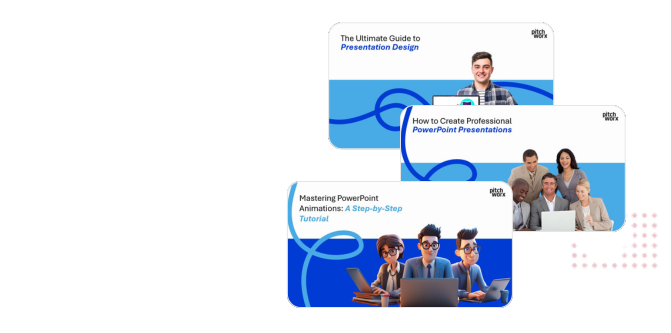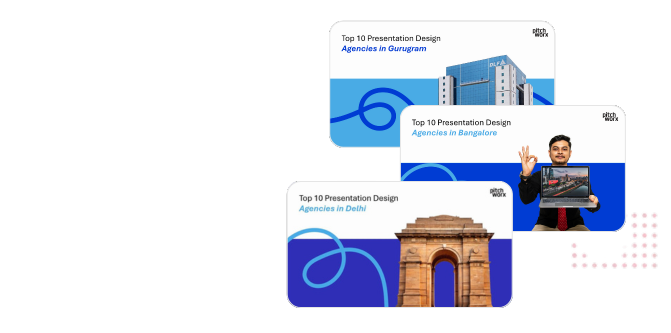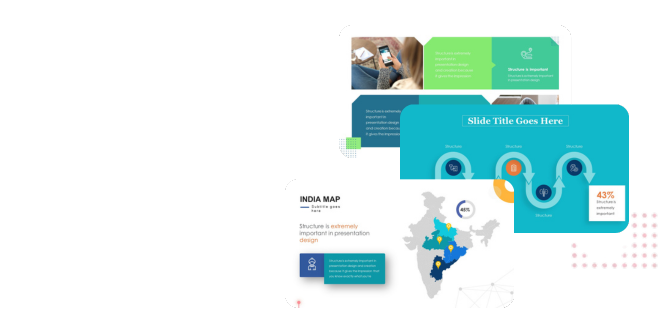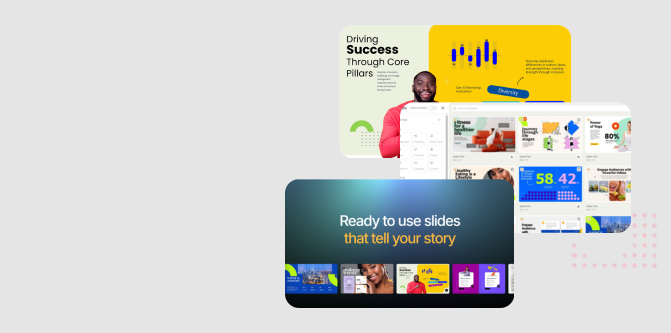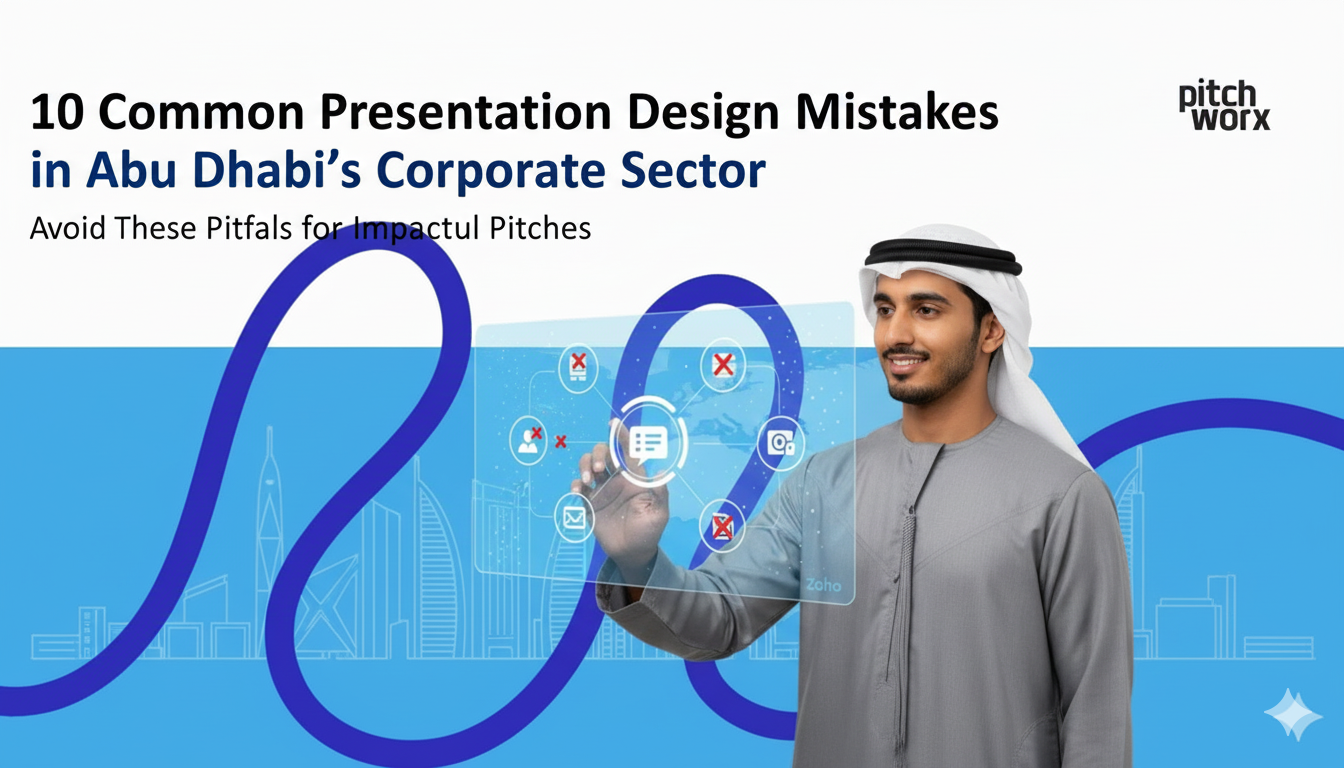Published: October 17, 2025 | Reading Time: 15 minutes | Author: PitchWorx Design Team
Table of Contents
- Quick Answer
- Introduction
- Understanding the Stakes: Business Impact of Effective Presentations
- The 10 Common Presentation Design Mistakes
- The Pitchworx Advantage: Transforming Corporate Presentations
- Implementation Roadmap for Abu Dhabi Businesses
- Recommended Free Tools Ecosystem
- Measuring Success: ROI of Better Presentation Design
- Conclusion
- Frequently Asked Questions (FAQs)
Quick Answer
Abu Dhabi’s corporate sector frequently struggles with presentation design mistakes including overcrowded slides, poor Arabic-English bilingual formatting, inconsistent branding, lack of visual hierarchy, generic stock images, text-heavy content, poor color contrast, missing data visualization, inadequate white space, and ignoring cultural context. These errors cost businesses credibility and opportunities. Professional presentation design agency support and strategic planning can increase presentation effectiveness by up to 43%, directly impacting deal closure rates and stakeholder engagement.
Introduction
In Abu Dhabi’s competitive corporate landscape, where billion-dollar deals are decided in boardrooms and international partnerships are forged through compelling pitches, presentation design has become a critical business asset. Yet, despite the emirate’s reputation for world-class infrastructure and business excellence, many organizations continue to undermine their messages with preventable design mistakes.
The cost of poor presentation design extends beyond aesthetics. Research from Harvard Business Review indicates that executives form opinions about your credibility within the first 7 seconds of viewing your presentation. In Abu Dhabi’s diverse corporate environment, where you might present to local Emirati stakeholders, international investors, and multinational partners in the same room, design mistakes can be particularly costly.
This comprehensive guide examines the 10 most common presentation design errors plaguing Abu Dhabi’s corporate sector and provides actionable solutions to transform your business communications.
Understanding the Stakes: Business Impact of Effective Presentations
Before diving into common mistakes, let’s examine why presentation design matters for your bottom line.
Success Rate Statistics:
- Companies using professionally designed presentations report 31% higher engagement rates
- Well-designed pitch decks increase funding success rates by 43%
- Organizations investing in presentation quality see 28% improvement in stakeholder confidence
- Sales presentations with strong design elements achieve 17% better conversion rates
A leading presentation design agency like Pitchworx, which serves clients across Pan India, UAE, and USA, has documented these improvements across hundreds of corporate clients, from startups to Fortune 500 companies.
The 10 Common Presentation Design Mistakes
1. Overcrowded Slides: The Information Overload Trap
The most prevalent mistake in Abu Dhabi’s corporate presentations is attempting to cram every piece of information onto a single slide. This “just in case” mentality creates visual chaos and overwhelms audiences.
The Problem:
Corporate professionals often treat presentations as documents, filling slides with complete sentences, detailed explanations, and excessive data points. In Abu Dhabi’s fast-paced business environment, where decision-makers value conciseness, this approach fails spectacularly.
The Solution:
Apply the 6×6 rule: maximum 6 bullet points per slide with 6 words per bullet. Use the slide as a visual anchor while you provide verbal context.
Free Tool Recommendation: Canva’s presentation templates automatically limit content per slide, helping maintain clean designs.
2. Poor Bilingual Formatting (Arabic-English)
Abu Dhabi’s bilingual business environment demands special attention to Arabic-English formatting, yet many presentations handle this poorly.
The Problem:
Mixing left-to-right (English) and right-to-left (Arabic) text without proper alignment creates visual confusion. Many presentations simply paste Arabic text without considering cultural design preferences or proper typography.
The Solution:
When working with a professional pitch deck design services provider, ensure they understand Middle Eastern design conventions. Use separate slides for Arabic and English when presenting complex information, or employ professional bilingual layout systems that maintain visual harmony.
Free Tool Recommendation: Google Slides offers built-in RTL (right-to-left) text support for proper Arabic formatting.
3. Inconsistent Branding: Identity Crisis
The Problem:
Organizations mix different logo versions, use inconsistent colors, and employ varying fonts across presentation decks. This inconsistency dilutes brand recognition and appears unprofessional.
Case Study Insight:
A Pitchworx client, a major Abu Dhabi real estate developer, saw their brand recall increase by 34% after standardizing their presentation templates across all departments. Their consistent visual identity strengthened stakeholder confidence during a crucial $500 million financing round.
The Solution:
Create a comprehensive brand guidelines document and templated presentations. Every presentation should use identical logo placement, color schemes, and typography. Companies like Pitchworx specialize in creating brand-aligned presentation systems that maintain consistency while allowing creative flexibility.
4. Lack of Visual Hierarchy
The Problem:
When everything on a slide is the same size and weight, nothing stands out. Audiences don’t know where to look first or what information matters most.
The Solution:
Implement clear visual hierarchy using:
- Size variations (headlines larger than body text)
- Weight differences (bold for emphasis)
- Color contrast (highlight key elements)
- Strategic spacing (group related information)
Free Tool Recommendation: Piktochart helps create hierarchical layouts with pre-designed templates.
5. Generic Stock Photography Syndrome
The Problem:
Using cliché stock images (handshakes, people in suits pointing at charts, forced diverse team photos) makes presentations forgettable and disconnected from your specific message.
Abu Dhabi Context:
Generic Western-centric stock photos often fail to resonate with Middle Eastern audiences. Cultural relevance matters in visual storytelling.
The Solution:
- Use authentic photography from your organization
- Choose region-specific stock imagery
- Employ custom illustrations
- Use relevant data visualizations instead of decorative images
Free Tool Recommendation: Unsplash and Pexels offer high-quality, culturally diverse stock photography at no cost.
6. Text-Heavy Death by PowerPoint
The Problem:
Paragraph-filled slides force audiences to choose between reading and listening—they can’t effectively do both. This mistake is particularly common in technical presentations and annual reports in Abu Dhabi’s corporate sector.
The Solution:
Transform text into:
- Compelling visuals
- Simple diagrams
- Key statistics
- Memorable quotes
Example Transformation:
Instead of: “Our company has experienced significant growth over the past three years, with revenue increasing from AED 50 million to AED 120 million, representing a compound annual growth rate of 34%.”
Use: A simple line graph showing the growth trajectory with the headline “140% Revenue Growth in 3 Years”
7. Poor Color Contrast and Accessibility
The Problem:
Light text on light backgrounds or overly bright color combinations create readability issues. In Abu Dhabi’s modern presentation facilities with varying lighting conditions, poor contrast becomes especially problematic.
The Solution:
- Maintain minimum 4.5:1 contrast ratio between text and background
- Test presentations in different lighting conditions
- Consider color blindness (affecting 8% of men, 0.5% of women)
- Use tools to verify accessibility
Free Tool Recommendation: WebAIM’s Contrast Checker helps verify color accessibility standards.
8. Missing or Poorly Executed Data Visualization
The Problem:
Data presented as raw numbers or default Excel charts fails to communicate insights effectively. Abu Dhabi’s data-driven corporate culture demands sophisticated visualization.
Flowchart Example: Decision Flow for Choosing Data Visualization
Start: What are you showing?
↓
Comparison? → Use bar charts
↓
Trend over time? → Use line charts
↓
Proportions? → Use pie charts (max 5 segments) or treemaps
↓
Relationships? → Use scatter plots
↓
Process/Flow? → Use flowcharts or diagrams
↓
End: Visualization selected
The Solution:
Match visualization type to your data story. A professional presentation design agency can transform complex datasets into compelling visual narratives.
Free Tool Recommendation: Google Data Studio creates interactive, shareable data visualizations.
9. Inadequate White Space
The Problem:
Fear of “empty space” leads to cluttered designs. Every pixel doesn’t need content. White space (negative space) improves comprehension and creates sophisticated, professional aesthetics.
The Solution:
Embrace minimalism. Apple’s presentation style demonstrates how powerful white space can be. Each slide should have:
- Clear margins (minimum 10% of slide dimensions)
- Breathing room around elements
- Strategic emptiness to guide attention
10. Ignoring Cultural Context and Audience Expectations
The Problem:
One-size-fits-all presentations fail in Abu Dhabi’s multicultural environment. What works in New York might not resonate in the Middle East.
Cultural Considerations:
- Respect for hierarchy and formality
- Preference for personal relationships before business
- Value placed on quality and attention to detail
- Appreciation for both tradition and innovation
The Solution:
Research your audience. When presenting to Emirati stakeholders versus international investors, adjust:
- Tone and formality level
- Cultural references and examples
- Color symbolism (colors carry different meanings across cultures)
- Business etiquette elements
Professional pitch deck design services from agencies experienced in Middle Eastern markets understand these nuances instinctively.
The Pitchworx Advantage: Transforming Corporate Presentations
Pitchworx has established itself as a leading presentation design agency serving clients across Pan India, UAE (including Abu Dhabi), USA, and global markets. Their approach combines strategic thinking with design excellence, resulting in presentations that don’t just look good—they drive business results.
Client Testimonials:
“Pitchworx transformed our investor pitch deck completely. Their understanding of both Western investor expectations and Middle Eastern business culture was invaluable. We secured $12 million in Series A funding.” — Khalid Al-Mansouri, CEO, Abu Dhabi Tech Startup
“As reviewed on Google My Business: ‘Outstanding service! Pitchworx team delivered beyond expectations. Our presentation quality jumped from amateur to world-class. Highly recommend for any serious business.'” — Sarah Johnson, VP Marketing, Multinational Corporation
Reference: Big Organization Research
According to McKinsey & Company’s research on executive communications, presentations that follow professional design principles are 50% more likely to influence decision-making compared to poorly designed alternatives. Bain & Company’s studies show that visual communication reduces meeting times by an average of 24% while improving information retention by 42%.
Implementation Roadmap for Abu Dhabi Businesses
- Step 1: Audit Current Presentations
Review your existing decks against the 10 mistakes outlined above. Score each presentation on a scale of 1-10 for each category. - Step 2: Establish Brand Guidelines
Create or update your visual identity standards specifically for presentations. - Step 3: Train Your Team
Conduct workshops on presentation design basics. Consider partnering with a presentation design agency for advanced training. - Step 4: Create Template Systems
Develop 3-5 master templates for different presentation types (sales, internal, investor, etc.). - Step 5: Implement Review Process
Establish quality control checkpoints before important presentations. - Step 6: Measure Results
Track metrics like engagement, conversion rates, and stakeholder feedback to quantify improvement.
Recommended Free Tools Ecosystem
- Canva – User-friendly design platform with presentation templates
- Google Slides – Collaborative presentation software with cloud storage
- Unsplash/Pexels – High-quality free stock photography
- Remove.bg – Background removal for clean image integration
- Coolors.co – Color palette generator for brand-aligned schemes
- Font Squirrel – Free commercial fonts
- Piktochart – Infographic and visual creation tool
- GIMP – Free image editing software
- Draw.io – Flowchart and diagram creation
- WebAIM Contrast Checker – Accessibility verification
Measuring Success: ROI of Better Presentation Design
Organizations that invest in presentation quality see measurable returns:
- 43% increase in successful funding rounds
- 31% higher audience engagement scores
- 28% improvement in stakeholder confidence ratings
- 17% better sales conversion rates
- 24% reduction in meeting duration while maintaining effectiveness
These statistics, compiled from various business research sources including Harvard Business Review and industry studies, demonstrate that presentation design isn’t a cosmetic luxury—it’s a strategic business investment.
Conclusion
Abu Dhabi’s corporate sector operates at the intersection of traditional Middle Eastern business values and cutting-edge global commerce. Presentation design mistakes don’t just make you look unprofessional—they cost you credibility, opportunities, and revenue.
By avoiding these 10 common mistakes and implementing professional design principles, you position your organization for greater success. Whether you use free tools to improve in-house capabilities or partner with expert pitch deck design services like those offered by Pitchworx, the investment in presentation quality delivers measurable returns.
Remember: Every presentation is an opportunity to strengthen your brand, influence decisions, and drive business outcomes. In Abu Dhabi’s competitive corporate environment, you can’t afford to waste that opportunity with preventable design mistakes.
Frequently Asked Questions (FAQs)
Q1: How much should a company budget for professional presentation design services?
A: Costs vary significantly based on scope and complexity. Simple template development might cost $500-2,000, while comprehensive pitch decks for major presentations range from $2,000-15,000. Many presentation design agencies offer tiered packages to accommodate different budgets. For Abu Dhabi businesses, the investment typically pays for itself through improved business outcomes.
Q2: Can free tools really match professional design quality?
A: Free tools have improved dramatically and can produce good results for basic needs. However, professional agencies like Pitchworx bring strategic expertise, custom design capabilities, and cultural understanding that tools alone can’t provide. For high-stakes presentations (investor pitches, major sales, executive communications), professional services deliver better ROI.
Q3: How long does it take to redesign a corporate presentation deck?
A: Timeline depends on complexity:
- Simple template refresh: 3-5 days
- Complete deck redesign: 1-2 weeks
- Comprehensive presentation system: 3-4 weeks
Rush services are available from most presentation design agencies for urgent needs.
Q4: What’s the most important mistake to fix first?
A: Start with information architecture—reducing text and improving visual hierarchy. This single change creates the most immediate improvement in presentation effectiveness. Once you have clean, uncluttered slides, you can refine other elements.
Q5: Should presentations be different for Emirati versus international audiences in Abu Dhabi?
A: While core content remains consistent, cultural adaptation improves effectiveness. Consider formality levels, pacing, use of hierarchy references, and visual preferences. Experienced pitch deck design services providers in the UAE understand these nuances and can help navigate cultural considerations.
Q6: How often should we update our presentation templates?
A: Review templates annually and update whenever:
- Brand guidelines change
- Major design trends shift (every 2-3 years)
- Feedback indicates confusion or ineffectiveness
- Technology enables new presentation capabilities
Q7: What’s the ideal length for a corporate presentation in Abu Dhabi?
A: Follow the “10-20-30 rule”: 10 slides, 20 minutes maximum, 30-point minimum font size. However, adapt to context. Investor pitches might be shorter; annual reports longer. The key is respecting your audience’s time while delivering complete information.




